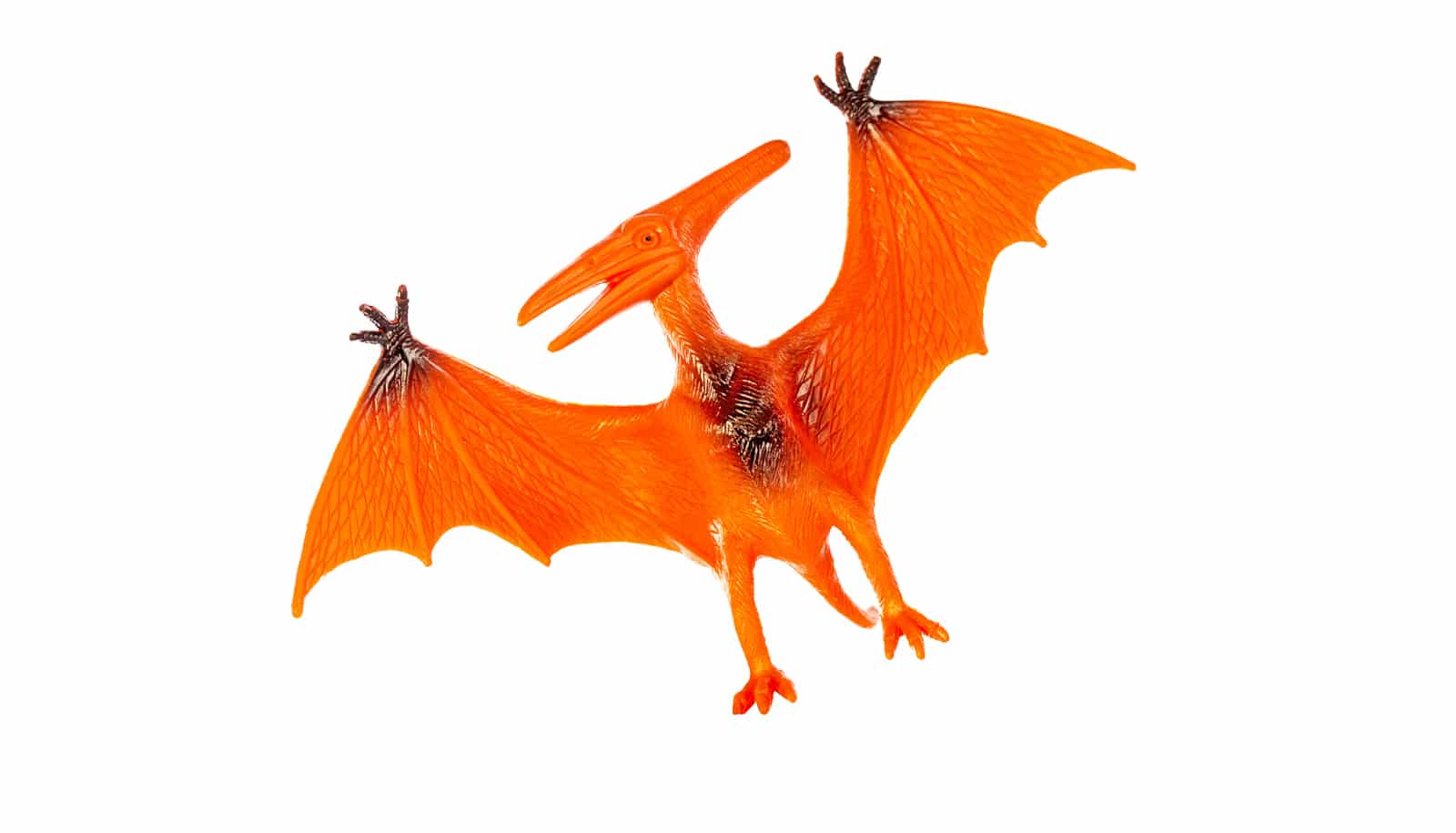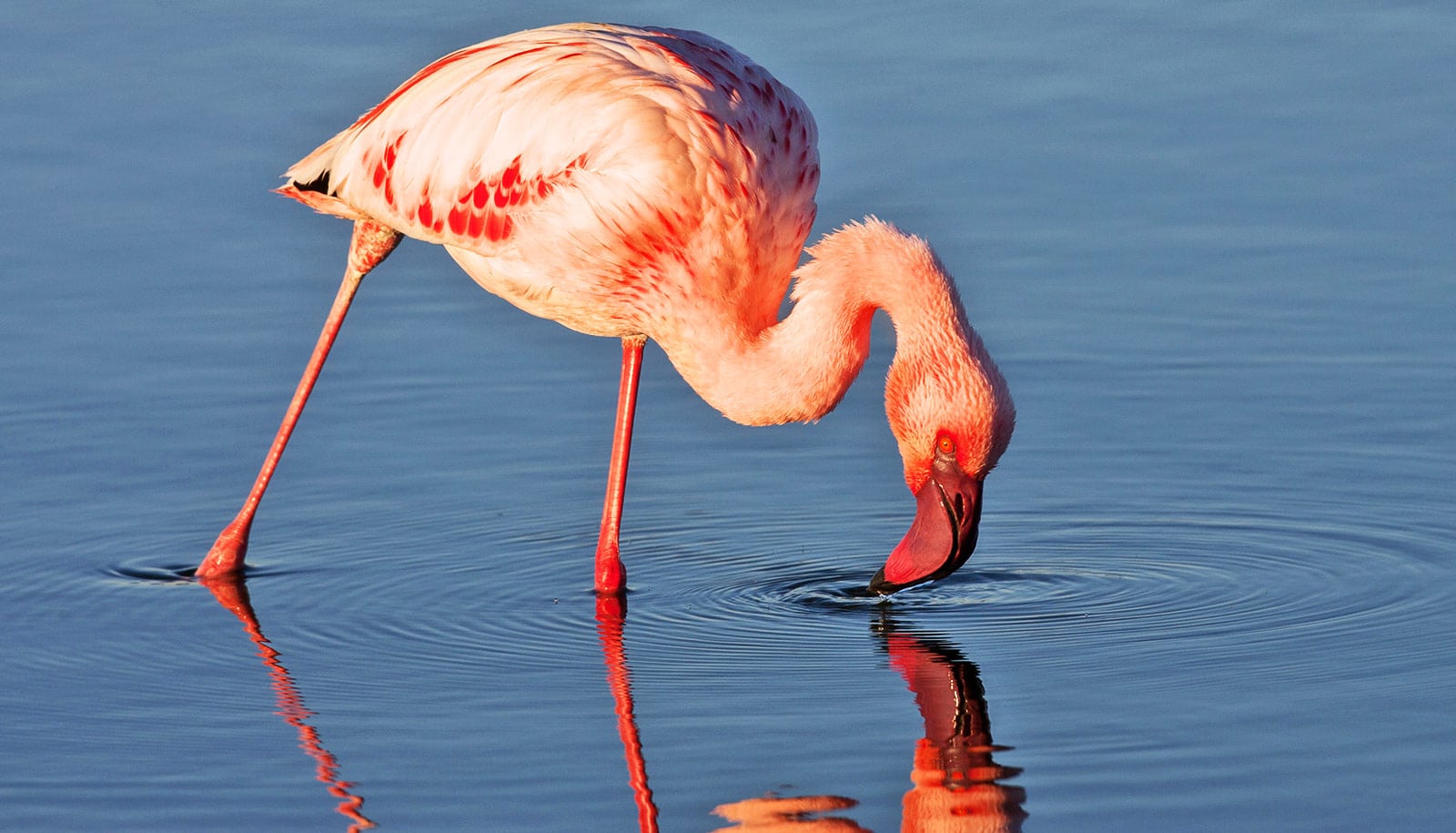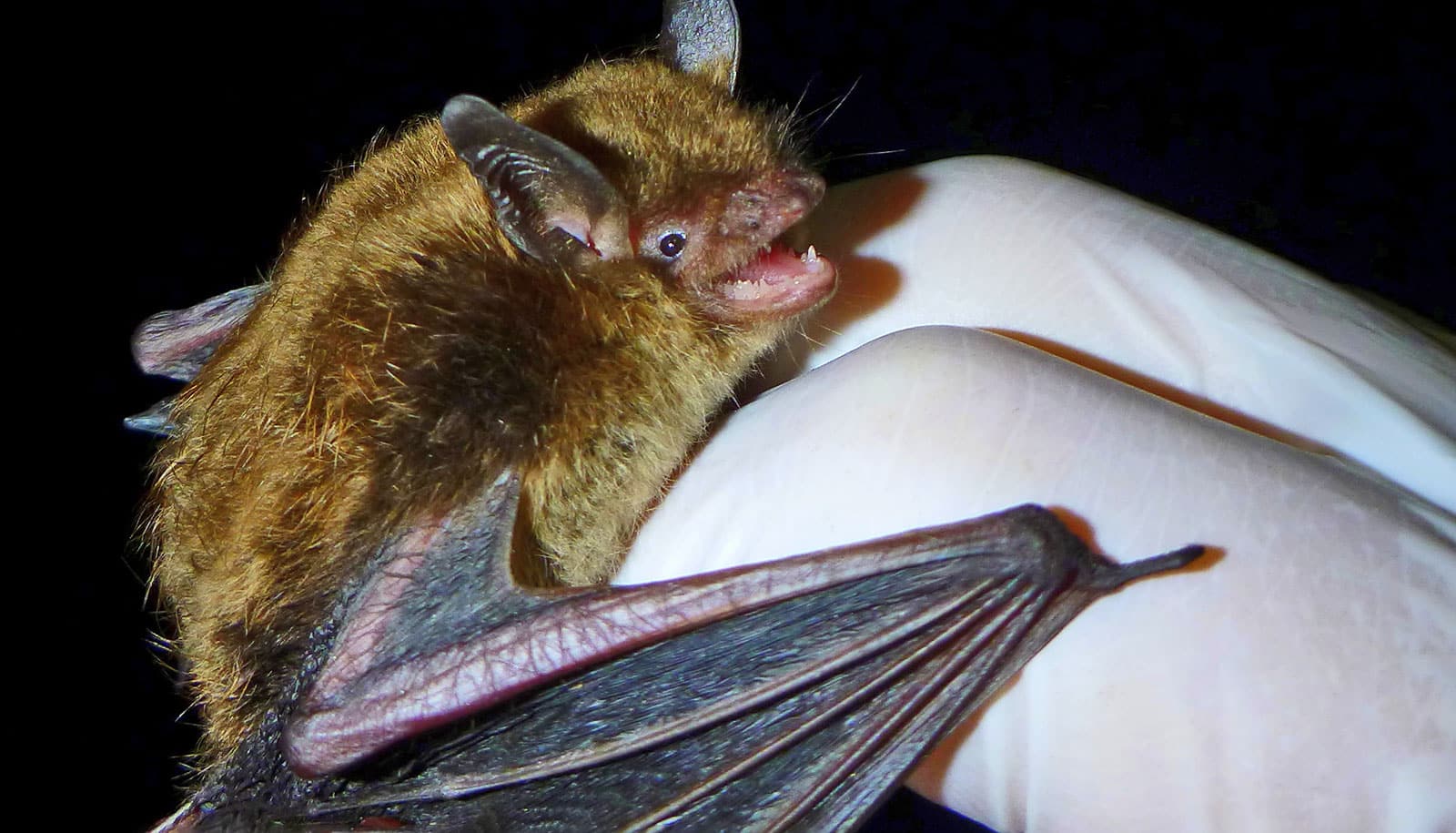Scientists have thought that pterodactyls and other extinct flying reptiles flew like bats, with their hind limbs splayed wide apart. A new study shows they probably couldn’t strike that pose.
“Most of the work that’s being done right now to understand pterosaur flight relies on the assumption that their hips could get into a bat-like pose,” says Armita Manafzadeh, a PhD student at Brown University who led the research with Kevin Padian of the University of California, Berkeley.
“We think future studies should take into account that this pose was likely impossible, which might change our perspective when we consider the evolution of flight in pterosaurs and dinosaurs.”
The findings, which appear in Proceedings of the Royal Society B, could help paleontologists infer the range of motion of joints in a way that takes into account the soft tissues—particularly ligaments—that play key roles in how joints work.
“…if you were to dig up a fossil chicken, how would you think its joints could move, and how wrong would you be?”
Generally, soft tissues don’t fossilize, leaving paleontologists to infer joint motion from bones alone. And there aren’t many constraints on how that’s done, Manafzadeh says. So she wanted to find a way to use present-day animals to test the extent to which ligaments limit joint motion.
It’s an idea that started with grocery store chickens.
“If you pick up a raw chicken at the grocery store and move its joints, you’ll reach a point where you’ll hear a pop,” Manafzadeh says. “That’s the ligaments snapping. But if I handed you a chicken skeleton without the ligaments, you might think that its joints could do all kinds of crazy things. So the question is, if you were to dig up a fossil chicken, how would you think its joints could move, and how wrong would you be?”
For the current study, she used dead quails, not chickens. Birds are the closest living relative of extinct pterosaurs and four-winged dinosaurs. After carefully cutting away the muscles surrounding the birds’ hip joints, she manipulated the joints while taking x-ray videos. That way, she could determine the exact 3D positions of the bones in poses where the ligaments prevented further movement.
The technique let Manafzadeh map out the range of motion of the quail hip with ligaments attached, which she could then compare to the range of motion that might have been inferred from bones alone. For the bones-only poses, Manafzadeh used traditional criteria that paleontologists often use—stopping where the two bones hit each other and when the movement pulled the thigh bone out of its socket.
Over 95 percent of the joint positions that seemed plausible with bones alone were actually impossible when ligaments were attached.
The next step was to work out how the range of motion of present-day quail hips might compare to the range of motion for extinct pterosaurs and four-winged dinosaurs.
The assumption has long been that these creatures flew a lot like bats do. That’s partly because the wings of pterosaurs were made of skin and supported by an elongated fourth finger, which is somewhat similar to the wings of bats. Bat wings are also connected to their hind limbs, which they splay out widely during flight.
In quail, a bat-like hip pose seemed possible based on bones alone, but outward motion of the thigh bone was inhibited by one particular ligament—a ligament that’s present in a wide variety of birds and other reptiles related to pterosaurs. No evidence suggests that extinct dinosaurs and pterosaurs wouldn’t have had this ligament, too.
Toothy beak bridges gap between dinosaurs and birds
And with that ligament attached, the findings suggest that the bat-like pose would be impossible, requiring the ligament to stretch 63 percent more than the quail ligament can. That’s quite a stretch, Manafzadeh says.
“That’s a huge difference that would need to be accounted for before it can be argued that a pterosaur or ‘four-winged’ dinosaur’s hip would be able to get into this bat-like pose,” Manafzadeh says.
That may require a rethinking of the evolution of flight in these animals.
Jurassic mammals were first to glide with ‘wings’
In addition to calling into question traditional ideas about flight in pterosaurs and early birds, the research also provides new ways of assessing joint mobility for any joint of any extinct species by looking at its living relatives.
“What we’ve done is to provide a reliable way to quantify in 3D everything a joint can do,” Manafzadeh says.
The Bushnell Research and Education Fund, Sigma Xi, Uplands Foundation, and the Sakana Foundation funded the work.
Source: Brown University



